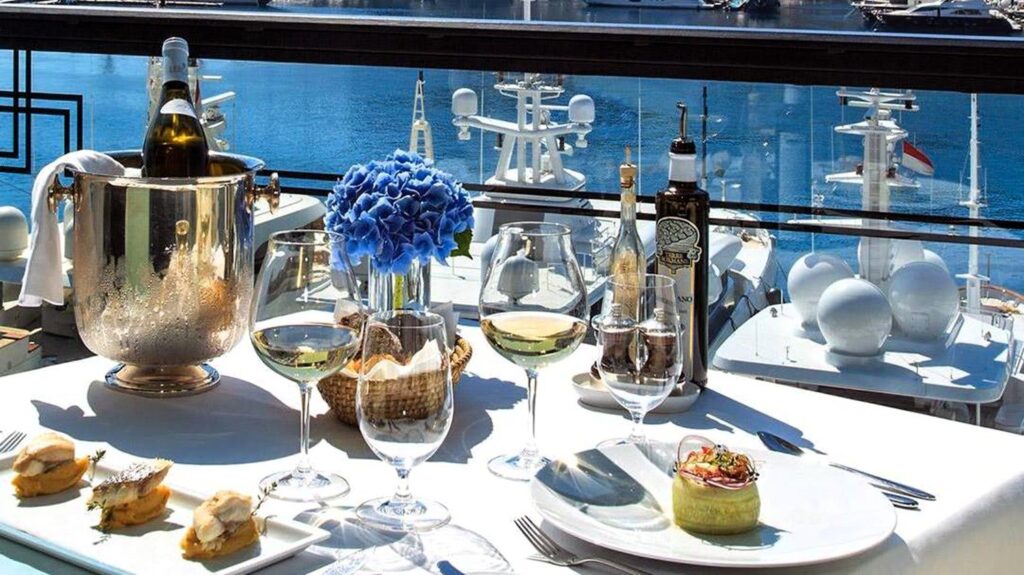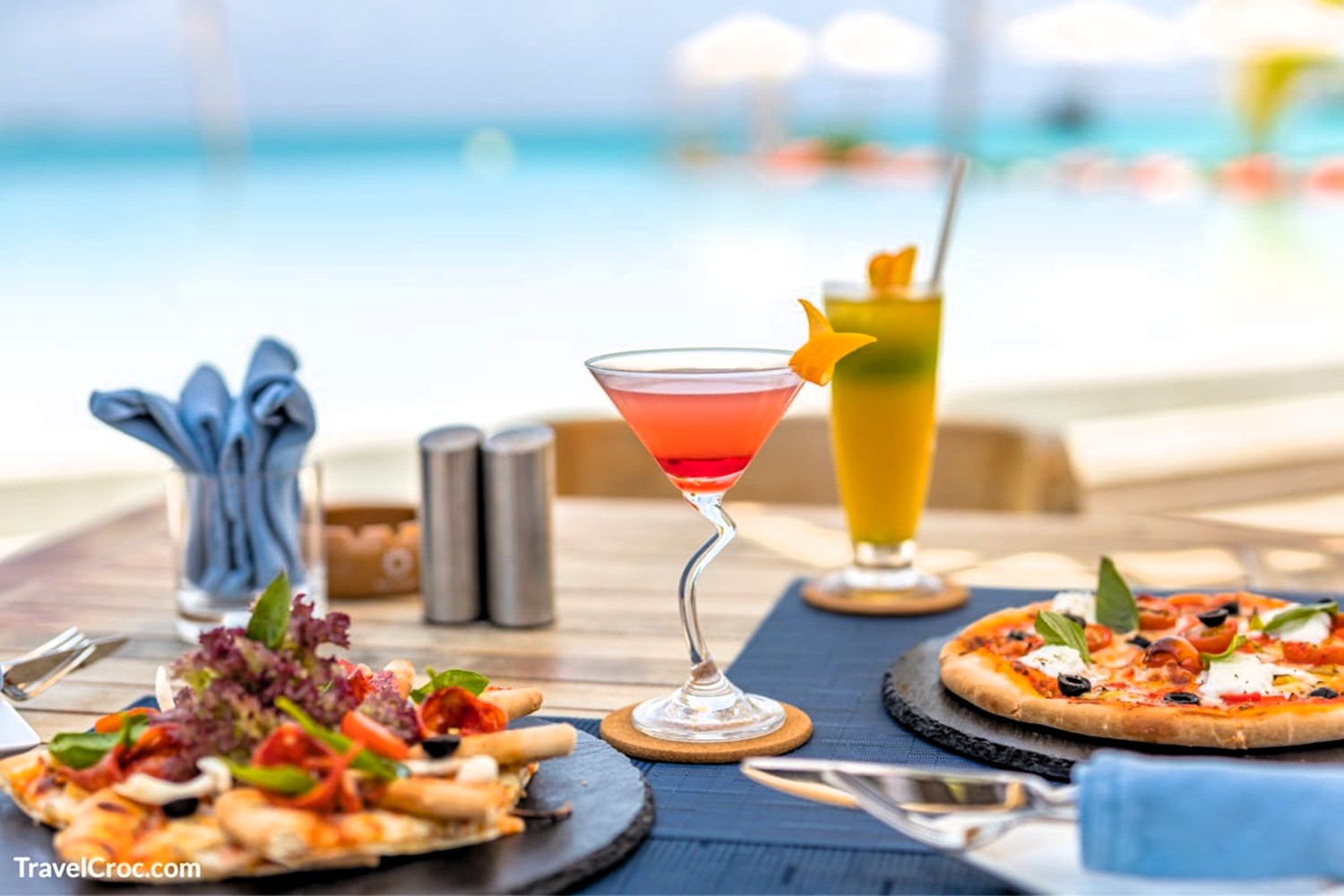Agencia Peruana de Noticias PRENSAPERU.PE https://prensaperu.pe/ Twitter: @prensaperupe Carmen Robatty de Moquillaza, presidenta del Comité de Pisco de la Asociación de Exportadores (ADEX), destacó que en la Expoalimentaria 2025 se busca posicionar el pisco en el segmento de alta gama, gracias a los contactos establecidos con compradores potenciales de EE.UU., España y Ecuador, entre otros países.
“Se trata de botellas de 500 ml. y 750 ml. con un diseño de etiqueta y packaging más sofisticado, añejadas por más tiempo y pensadas para coleccionistas”, comentó en el Salón del Pisco de la feria. Bodega Viña Vieja, Bodegas y Viñedos Grimaldi, Bodega El Catador, Bodega 3 generaciones, Bodega Buena Cosecha, Bodega Cuneo, Bodega Pampas y Finca 314 exhiben lo mejor de su oferta en esta edición.
Además de las presentaciones de lujo, también se exhiben Pisco Mosto Verde Italia, Pisco Puro Italia, Pisco Puro Quebranta y Pisco Acholado, así como innovadoras bebidas a base de pisco, como cremas con frutas e insumos –chirimoya, café y algarrobina–, y vinos de uvas patrimoniales.
“Nuestro destilado sigue ganando reconocimiento mundial, pero debemos consolidar la estrategia de diversificación de destinos y reforzar su posicionamiento en Europa y América, además de ingresar con fuerza en Asia, donde aún hay un gran potencial por aprovechar”, añadió Robatty de Moquillaza.
En el recinto ferial, algunas empresas presentaron productos innovadores como salsas con pisco, cocona, cebolla, ají charapita, culantro, ajo y aceite de girasol; y otras con cebolla china, aceite de girasol, huacatay, limón, ajo, kion, vinagre, sal y pimienta, demostrando la versatilidad del pisco en la gastronomía moderna. “Esto subraya una vez más su adaptabilidad y riqueza”, concluyó.
EXPORTACIONES EN ASCENSO
Entre enero y julio de este año, las exportaciones de pisco alcanzaron los US$ 5 millones 576 mil, un aumento del 4.8% en comparación con el mismo período de 2024 (US$ 5 millones 322 mil), impulsando a productores y exportadores a intensificar sus esfuerzos para llegar a más mercados.
Estados Unidos lideró las importaciones con US$ 2 millones 129 mil, representando el 38.2% del total y un aumento del 13.5%, consolidando su posición como principal destino. Países Bajos se ubicó en segundo lugar con US$ 735 mil, mostrando un notable incremento del 54.3%, seguido por España con US$ 717 mil y un avance del 0.5%.
Otros destinos con resultados positivos incluyen Bélgica (30.3%), Francia (46.7%) y Reino Unido (95%), confirmando el creciente interés del mercado europeo por el pisco.
UN ESCENARIO DE OPORTUNIDADES
La Expoalimentaria, organizada por ADEX con el apoyo del Midagri, se consolida como una plataforma clave para la promoción del pisco. Cuenta con el respaldo de Talma Servicios Aeroportuarios, Kikko Corporation, Universidad de Lima, Nunatura, Dinet, Agrorum, Solgas, Consorcio Eléctrico de Villacuri, Cold Import, Universidad Privada del Norte, Absorpro, Fequsa Ings., Concesionaria Interoceánica Sur Tramo 3, AB Sciex, Owens-Illinois Perú, Seidlitz Chile, Cenfrico, Alfosac, United Cargo Company, Interbank, Thermofisher, Proyecto Ventanilla y Evergreen.
¿QUÉ SON LOS NICHOS DE ALTA GAMA?
Cuando se habla de “nichos de alta gama”, se refiere a segmentos específicos del mercado que se caracterizan por demandar productos o servicios exclusivos, de alta calidad y con un precio superior al promedio. Estos nichos están compuestos por consumidores que buscan distinción, lujo y una experiencia de compra excepcional.
Características Principales de los Nichos de Alta Gama:
EXCLUSIVIDAD
Disponibilidad Limitada.
Los productos o servicios suelen ser producidos en cantidades limitadas para mantener su exclusividad.
Acceso Restringido
Pueden requerir membresías, invitaciones o cumplir con ciertos criterios para acceder a ellos.
CALIDAD SUPERIOR
Materiales Premium.
Se utilizan materiales de la más alta calidad, seleccionados cuidadosamente.
Artesanía y Detalle.
La elaboración suele ser artesanal, con atención meticulosa a los detalles.
PRECIO ELEVADO
Valor Percibido.
El precio refleja la calidad, exclusividad y prestigio asociados al producto o servicio.
Disposición a Pagar.
Los consumidores están dispuestos a pagar más por la diferenciación y el valor añadido.
EXPERIENCIA PERSONALIZADA
Atención Exclusiva.
Se ofrece un servicio al cliente personalizado y de alta calidad.
Experiencias Únicas.
Se busca crear experiencias memorables y adaptadas a las necesidades del cliente.
PRESTIGIO Y RECONOCIMIENTO
Marca Reconocida.
Los productos o servicios suelen estar asociados a marcas de renombre y prestigio.
Estatus Social.
Adquirir estos productos o servicios puede ser una forma de expresar estatus y pertenencia a un grupo selecto.
CONCLUSIONES
1.- Posicionamiento Estratégico.
El pisco peruano está buscando consolidarse en nichos de alta gama, aprovechando eventos como Expoalimentaria para establecer contactos clave y promover productos de lujo.
2.- Diversificación y Adaptabilidad.
La industria del pisco está innovando con nuevas presentaciones y usos, como las salsas y cremas, demostrando su versatilidad y capacidad de adaptación a las tendencias del mercado.
3.- Crecimiento Sostenido.
Las exportaciones de pisco muestran un crecimiento constante, con mercados clave como EE.UU. y Europa liderando la demanda, lo que indica un futuro prometedor para el destilado peruano.
Fuente: Agencia Peruana de Noticias PRENSAPERU.PE https://prensaperu.pe/ Twitter: @prensaperupe

English Translation
Peruvian Pisco Aims for Luxury at Expoalimentaria 2025: “Our national beverage innovates with sauces and creams to conquer palates in high-end niches”.
Peruvian News Agency PRENSAPERU.PE https://prensaperu.pe/ Twitter: @prensaperupe Carmen Robatty de Moquillaza, president of the Pisco Committee of the Association of Exporters (ADEX), emphasized that Expoalimentaria 2025 seeks to position pisco in the high-end segment, thanks to the contacts established with potential buyers from the US, Spain, and Ecuador, among other countries.
“These are 500 ml and 750 ml bottles with a more sophisticated label and packaging design, aged for longer periods, and designed for collectors,” she commented at the fair’s Pisco Salon. Viña Vieja Winery, Grimaldi Wineries and Vineyards, El Catador Winery, 3 Generations Winery, Buena Cosecha Winery, Cuneo Winery, Pampas Winery, and Finca 314 showcase the best of their offerings in this edition.
In addition to the luxury presentations, Pisco Mosto Verde Italia, Pisco Puro Italia, Pisco Puro Quebranta, and Pisco Acholado are also on display, as well as innovative pisco-based drinks, such as creams with fruits and ingredients—custard apple, coffee, and carob—and wines made from heritage grapes.
“Our spirit continues to gain worldwide recognition, but we must consolidate our destination diversification strategy and strengthen its positioning in Europe and the Americas, in addition to making a strong entrance into Asia, where there is still great potential to be tapped,” added Robatty de Moquillaza.
At the fairgrounds, several companies presented innovative products such as sauces with pisco, cocona, onion, charapita chili, cilantro, garlic, and sunflower oil; and others with spring onion, sunflower oil, huacatay, lemon, garlic, ginger, vinegar, salt, and pepper, demonstrating the versatility of pisco in modern gastronomy. “This once again underscores its adaptability and richness,” he concluded.
EXPORTS ON THE RISE
Between January and July of this year, pisco exports reached US$5,576,000, a 4.8% increase compared to the same period in 2024 (US$5,322,000), prompting producers and exporters to intensify their efforts to reach more markets.
The United States led imports with US$2,129,000, representing 38.2% of the total and a 13.5% increase, consolidating its position as the main destination. The Netherlands ranked second with US$735,000, showing a notable increase of 54.3%, followed by Spain with US$717,000, an increase of 0.5%.
Other destinations with positive results include Belgium (30.3%), France (46.7%), and the United Kingdom (95%), confirming the growing interest in pisco in the European market.
A STAGE OF OPPORTUNITIES
Expoalimentaria, organized by ADEX with the support of the Ministry of Agriculture, Fisheries and Food (MIDAGRI), is consolidating its position as a key platform for promoting pisco. It has the support of Talma Airport Services, Kikko Corporation, University of Lima, Nunatura, Dinet, Agrorum, Solgas, Villacuri Electric Consortium, Cold Import, Universidad Privada del Norte, Absorpro, Fequsa Ings., Concesionaria Interoceánica Sur Tramo 3, AB Sciex, Owens-Illinois Perú, Seidlitz Chile, Cenfrico, Alfosac, United Cargo Company, Interbank, Thermofisher, Proyecto Ventanilla, and Evergreen.
WHAT ARE HIGH-END NICHES?
When we talk about “high-end niches,” we refer to specific market segments characterized by a demand for exclusive, high-quality products or services at a higher-than-average price. These niches are made up of consumers who seek distinction, luxury, and an exceptional shopping experience.
Main Characteristics of High-End Niches:
EXCLUSIVITY
Limited Availability.
Products or services are typically produced in limited quantities to maintain their exclusivity.
Restricted Access
Memberships, invitations, or certain criteria may be required to access them.
SUPERIOR QUALITY
Premium Materials.
Carefully selected, top-quality materials are used.
Craftsmanship and Detail.
Production is typically handcrafted, with meticulous attention to detail.
HIGH PRICE
Perceived Value.
Price reflects the quality, exclusivity, and prestige associated with the product or service.
Willingness to Pay.
Consumers are willing to pay more for differentiation and added value.
PERSONALIZED EXPERIENCE
Exclusive Attention.
Personalized, high-quality customer service is offered.
Unique Experiences.
The goal is to create memorable experiences tailored to customer needs.
PRESTIGE AND RECOGNITION
Recognized Brand.
Products or services are often associated with renowned and prestigious brands.
Social Status.
Purchasing these products or services can be a way to express status and belonging to a select group.
CONCLUSIONS
1.- Strategic Positioning.
Peruvian pisco is seeking to consolidate its presence in high-end niches, taking advantage of events like Expoalimentaria to establish key contacts and promote luxury products.
2.- Diversification and Adaptability.
The pisco industry is innovating with new presentations and uses, such as sauces and creams, demonstrating its versatility and ability to adapt to market trends.
3.- Sustained Growth.
Pisco exports show steady growth, with key markets like the US and Europe leading the demand, indicating a promising future for the Peruvian spirit.
Source: Peruvian News Agency PRENSAPERU.PE https://prensaperu.pe/ Twitter: @prensaperupe
